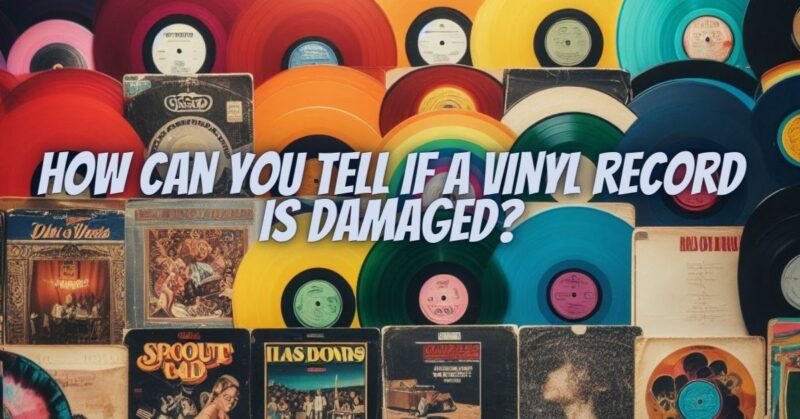There are a number of ways to tell if a vinyl record is damaged. Some of the most common signs of damage include:
- Scratches: Scratches on the surface of a record can cause the stylus to skip and produce surface noise. Scratches can be caused by careless handling, improper storage, or simply by wear and tear over time.
- Warping: Warping is a condition in which the record is not flat. Warping can be caused by heat, moisture, or pressure. A warped record will cause the stylus to skip and produce surface noise.
- Cracks: Cracks in the record can also cause the stylus to skip and produce surface noise. Cracks can be caused by mishandling or by the record being dropped.
- Dirt and dust: Dirt and dust can accumulate in the grooves of a record over time, causing the stylus to skip. This is especially common if the record is not stored properly or if it is played in a dusty environment.
- Wear and tear: Over time, the grooves on a record can become worn and damaged, which can lead to skipping and surface noise.
How to inspect a vinyl record for damage
When inspecting a vinyl record for damage, it is important to look at both sides of the record. You should also hold the record up to the light to inspect for scratches, cracks, and warping.
Here are some specific things to look for:
- Scratches: Scratches will appear as lines on the surface of the record. If the scratches are deep, they may be visible to the naked eye. However, some scratches may be so shallow that they can only be seen under a strong light.
- Warping: To check for warping, hold the record up to the light and look at the edges. If the edges of the record are not straight, then the record is warped.
- Cracks: Cracks will appear as lines on the surface of the record that go all the way through the record. Cracks are usually caused by mishandling or by the record being dropped.
- Dirt and dust: Dirt and dust will appear as specks on the surface of the record. If the record is dirty or dusty, you can clean it with a record brush or record cleaner.
- Wear and tear: Wear and tear will cause the grooves on the record to become worn and damaged. This can be seen as a loss of detail in the grooves.
What to do if you find damage on a vinyl record
If you find damage on a vinyl record, there are a few things you can do:
- Clean the record: If the record is dirty or dusty, you can clean it with a record brush or record cleaner.
- Repair the record: There are a number of ways to repair damage to vinyl records. However, it is important to note that repairing a record may not always be possible. If the damage is severe, the record may need to be replaced.
- Replace the record: If the damage to the record is beyond repair, you may need to replace the record. You can usually find replacement records at record stores or online retailers.
It is important to inspect your vinyl records for damage before playing them. By doing so, you can help to extend the life of your records and ensure that they sound their best.


